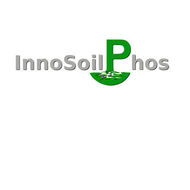Simulating the soil phosphorus dynamics of four long‐term field experiments with a novel phosphorus model (2023)
Gasser S., Nielsen K., Eichler‐Löbermann B., Armbruster M., Merbach I., Franko U.
Soil Use and Management, (),
Abstract
Phosphorus is a nonrenewable resource, which is required for crop growth and to maintain high yields. The soil P cycle is very complex, and new model approaches can lead to a better understanding of those processes and further guide to research gaps. The objective of this study was to present a P-submodel, which has been integrated in the existing Carbon Candy Balance (CCB) model that already comprises a C and N module. The P-module is linked to the C mineralization and the associated C-pools via the C/P ratio of fresh organic material. Besides the organic P cycling, the module implies a plant-available P-pool (Pav), which is in a dynamic equilibrium with the nonavailable P-pool (Pna) that comprises the strongly sorbed and occluded P fraction. The model performance was tested and evaluated on four long-term field experiments with mineral P fertilization, farmyard manure as organic fertilizer and control plots without fertilization. The C dynamics and the Pav dynamics were modelled with overall good results. The relative RMSE for the C was below 10% for all treatments, while the relative RMSE for Pav was below 15% for most treatments. To accommodate for the rather small variety of available P-models, the presented CNP-model is designed for agricultural field sites with a relatively low data input, namely air temperature, precipitation, soil properties, yields and management practices. The CNP-model offers a low entry threshold model approach to predict the C-N and now the P dynamics of agricultural soils.
